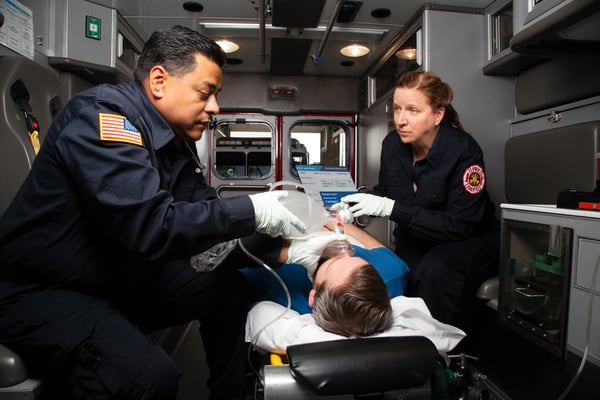News Alert: New ePCR Integration Simplifies EMS Data Management and Enables Better Care Coordination
Data Interoperability Drives Better Coordination of Care in Emergent Patient Transitions
Everything that happens in an ambulance has a huge impact on what happens to a patient in a hospital
Was this information valuable?

Everything that happens in an ambulance has a huge impact on what happens to a patient in a hospital. Unfortunately, handoffs between ambulances and emergency departments (ED) are consistently poor1, having major implications for future care. These poor handoffs have led EDs to suffer a significant amount of medical errors2, resulting in additional safety, legal, and financial risks for hospitals. With growing staff shortages, the risks will only intensify.
Luckily, interoperability platforms can enable automated data exchange, replacing manual processes that may delay care for patients. These platforms instead provide bi-directional, real-time data exchange between pre-hospital emergency medical service (EMS) providers and hospitals. The platforms make it easy to quickly relay important patient care report (PCR) details, including demographics, procedures, medications, etc. for more transparency between EMS and hospital care teams.
ZOLL Data Systems interoperability experts Mario Sanchez, Senior Product Manager, Greg Howard, Director of Hospital Interoperability Sales, and Pier Stagno, Senior Marketing Manager for ZOLL Medical Corporation, recently presented a webinar on how comprehensive, accurate, pre-hospital data from PCRs is vital to providing timely, high levels of care for patients during acute care transitions.
Attendees will learn how data interoperability between EMS and hospital providers can:
- Reduce medical errors
- Improve clinical documentation and integrity
- Help control costs
- Increase reimbursement rates
- Close major compliance gaps
To maximize the impact of a data interoperability platform, project teams should have:
- A clear understanding of workflows spanning the pre-hospital to hospital continuum of care
- A successful track record of electronic health record (EHR) integration
- A collaborative culture between EMS and hospital teams
- A strong financial backbone to deliver cost-effective solutions for rapid ROI
Watch the webinar, “Improving Performance in Acute Care Transitions,” to learn how data interoperability can help both first responders and hospital clinicians achieve more successful patient outcomes.
1 Troyer, Brady (July 2020) Barriers to effective EMS to emergency department information transfer at patient handover: A systematic review https://pubmed.ncbi.nlm.nih.gov/32321683/
2 Wong, et al (Feb 2021) Emergency Department and Urgent Care Medical Malpractice Claims 2001–15 https://www.ncbi.nlm.nih.gov/pmc/articles/PMC7972370/
Learn More About EMS/Hospital Interoperability:
Related Posts
4 Must-have Data Points for Dispatch-Billing Alignment and Maximum Reimbursement
How STAT MedEvac Connected Device, Software, and Data Technology To Enhance QA and Elevate Care
ZOLL Pulse Blog
Subscribe to our blog and receive quality content that makes your job as an EMS & fire, hospital, or AR professional easier.
ZOLL Pulse Blog
Subscribe to our blog and receive quality content that makes your job as an EMS, fire, hospital, or AR professional easier.




